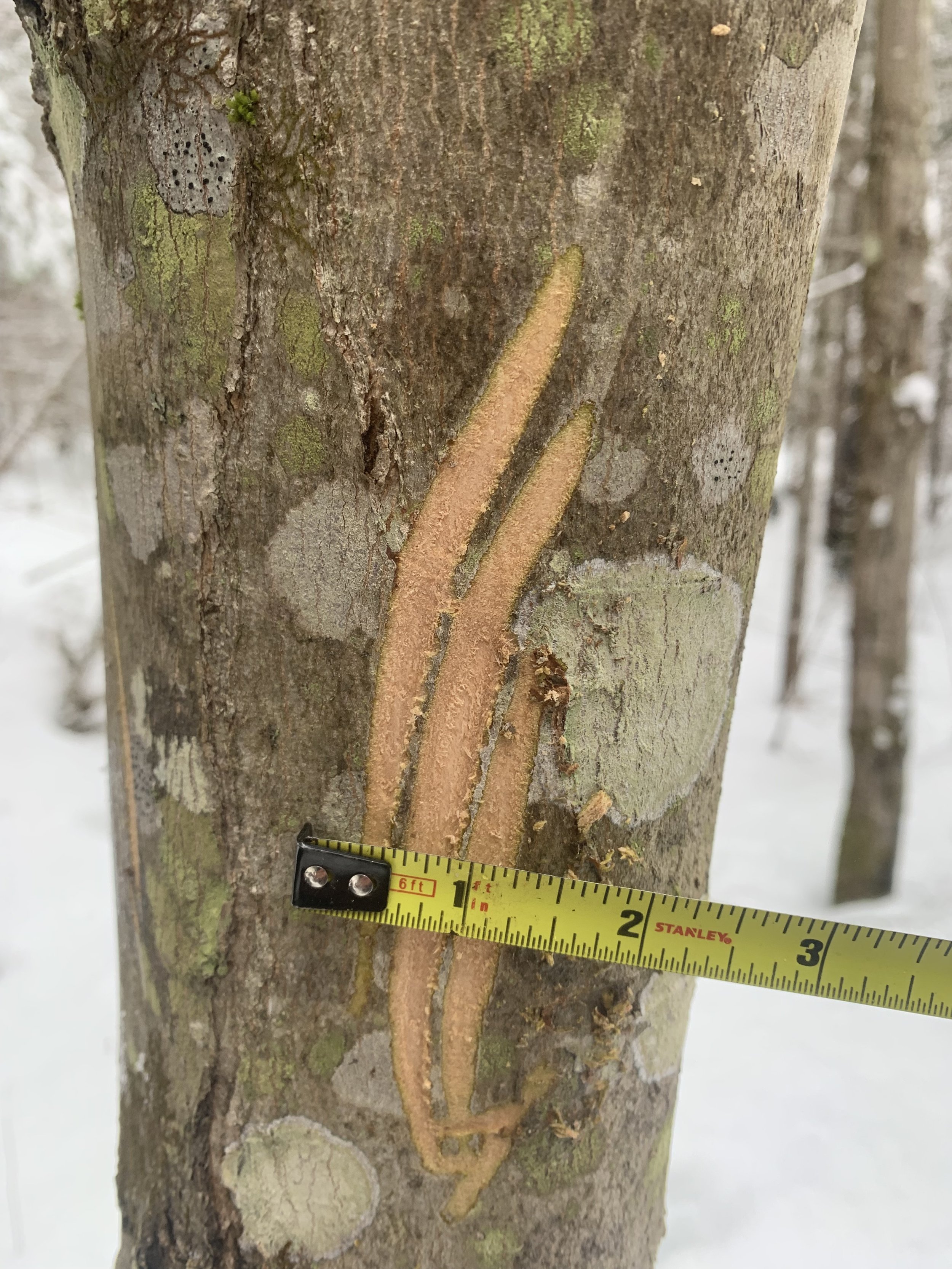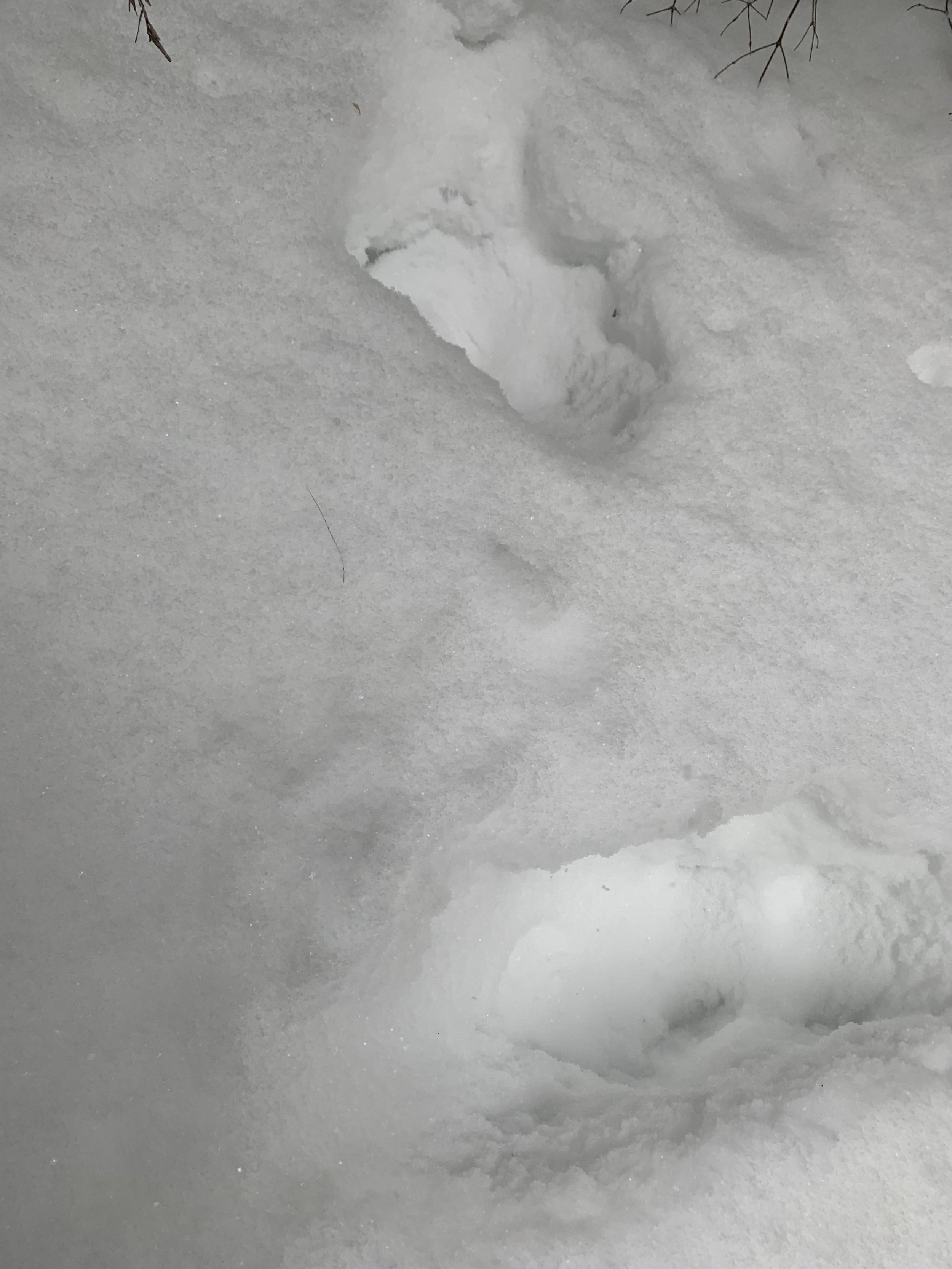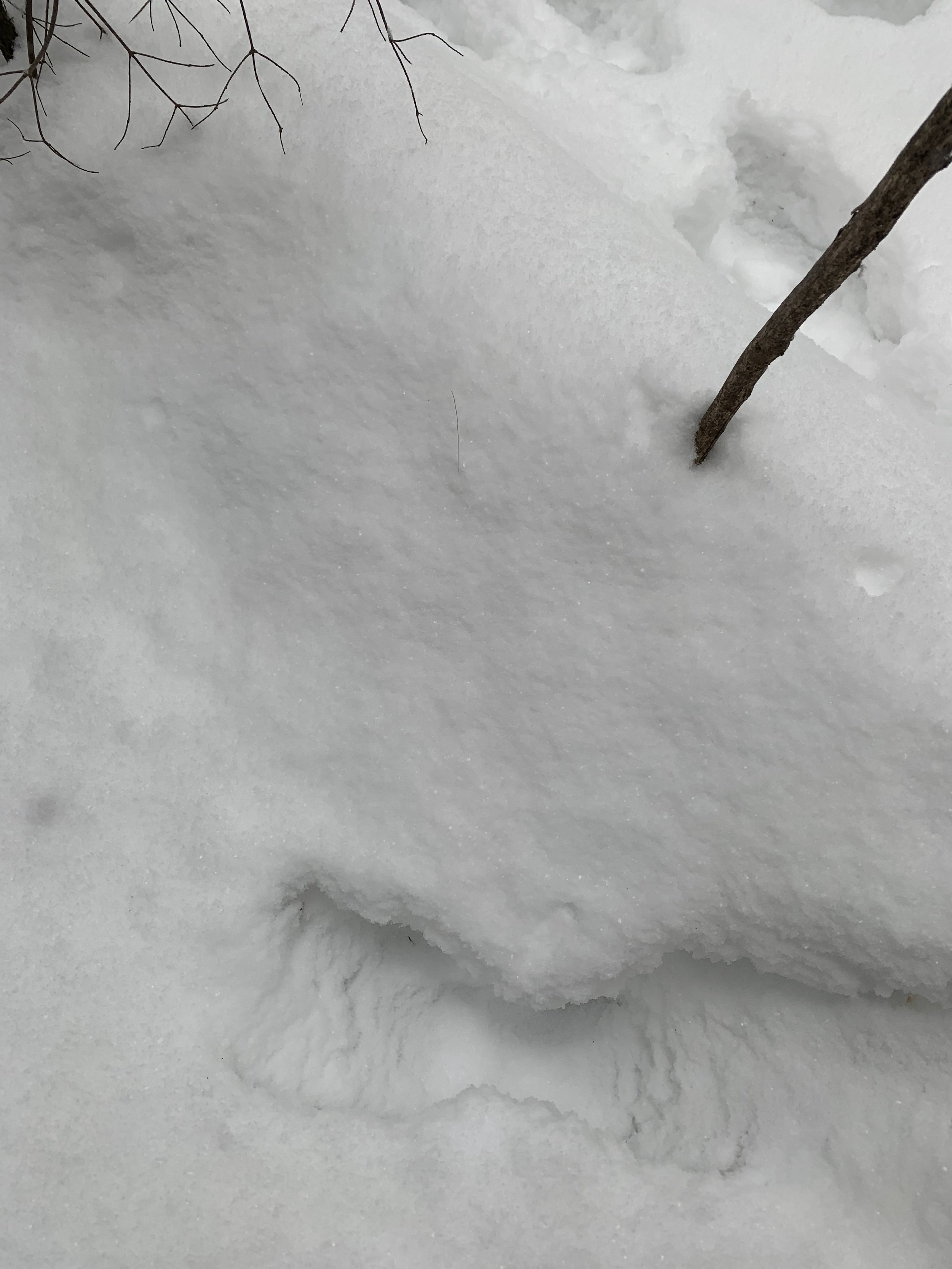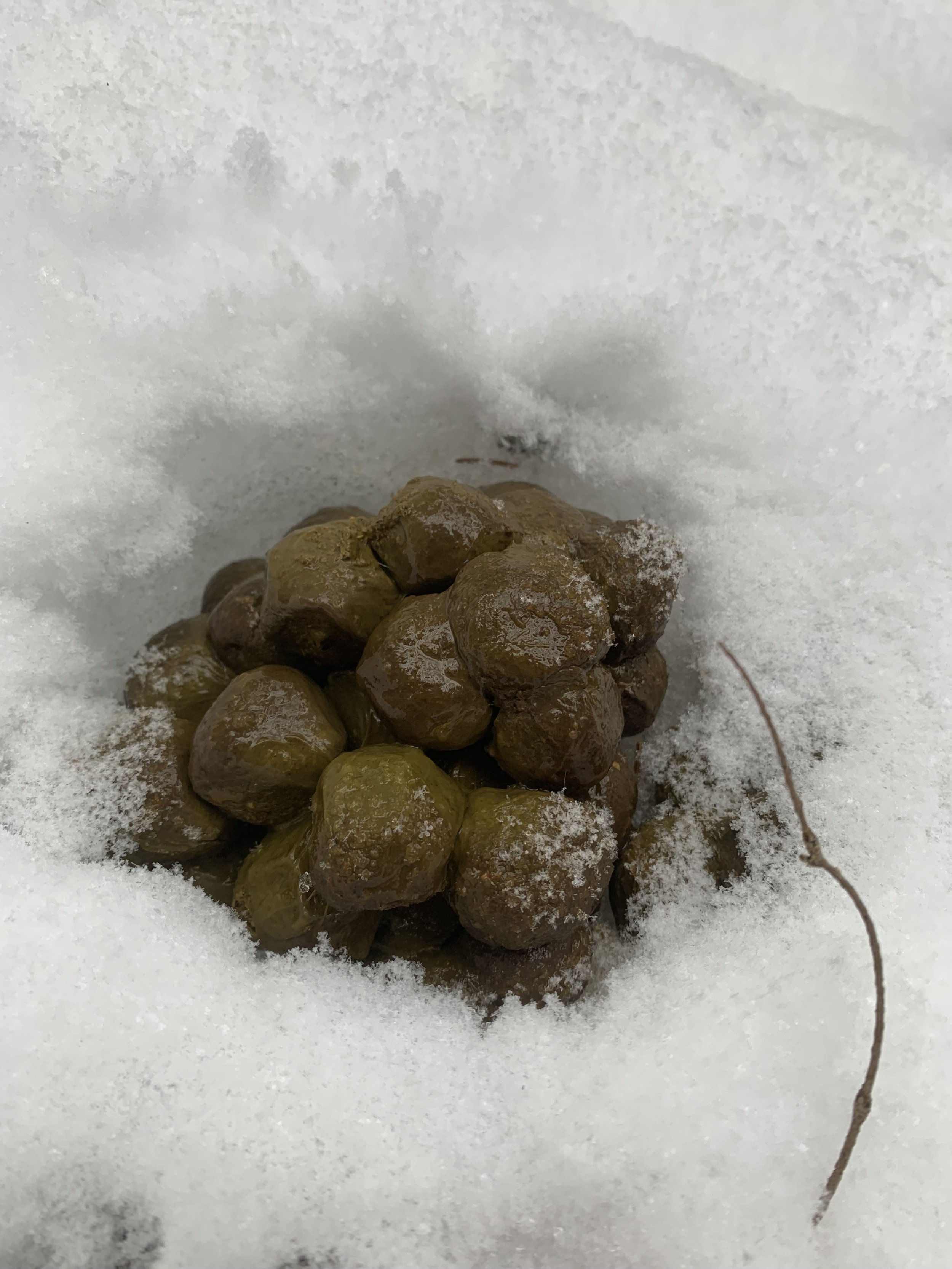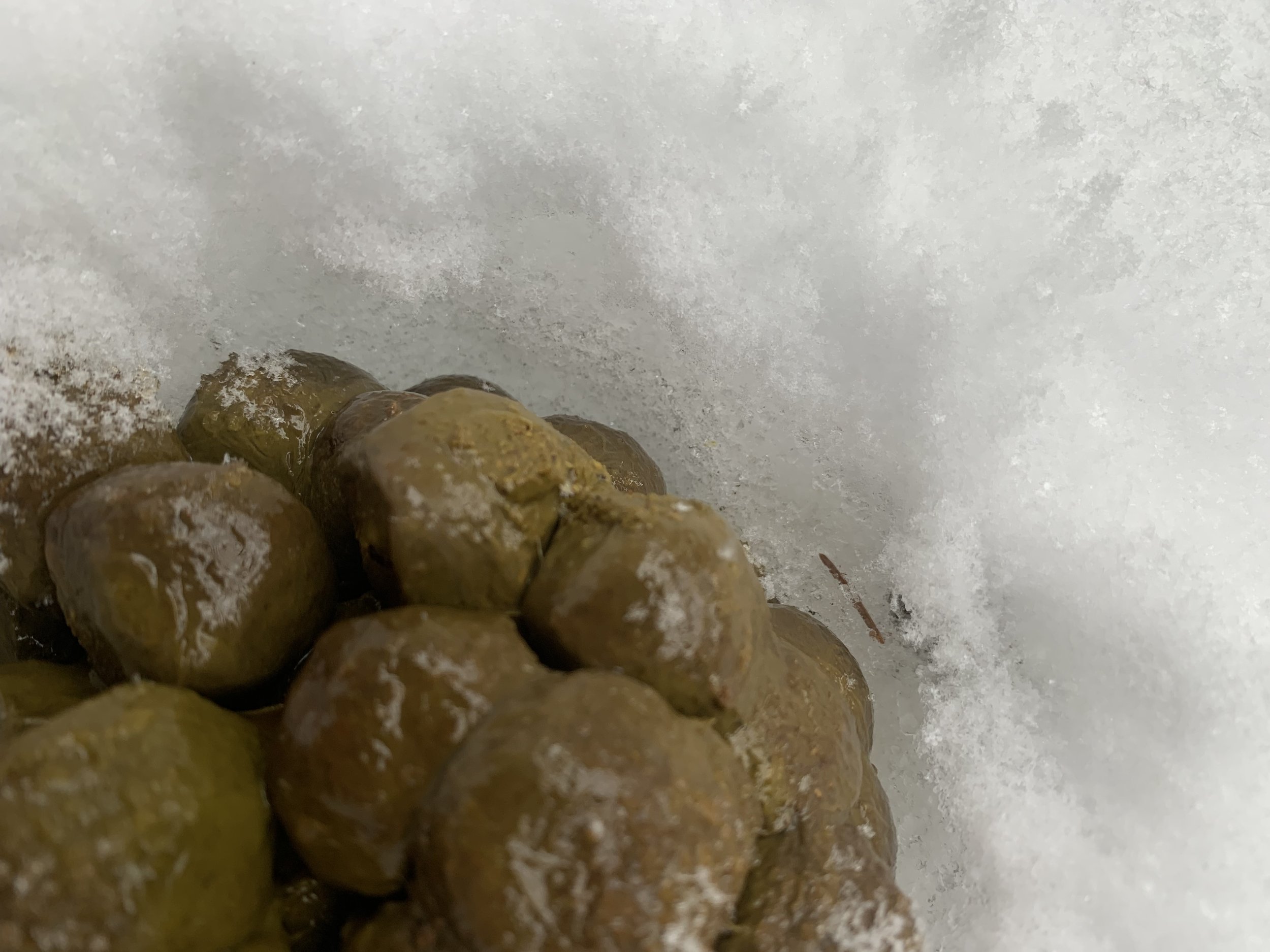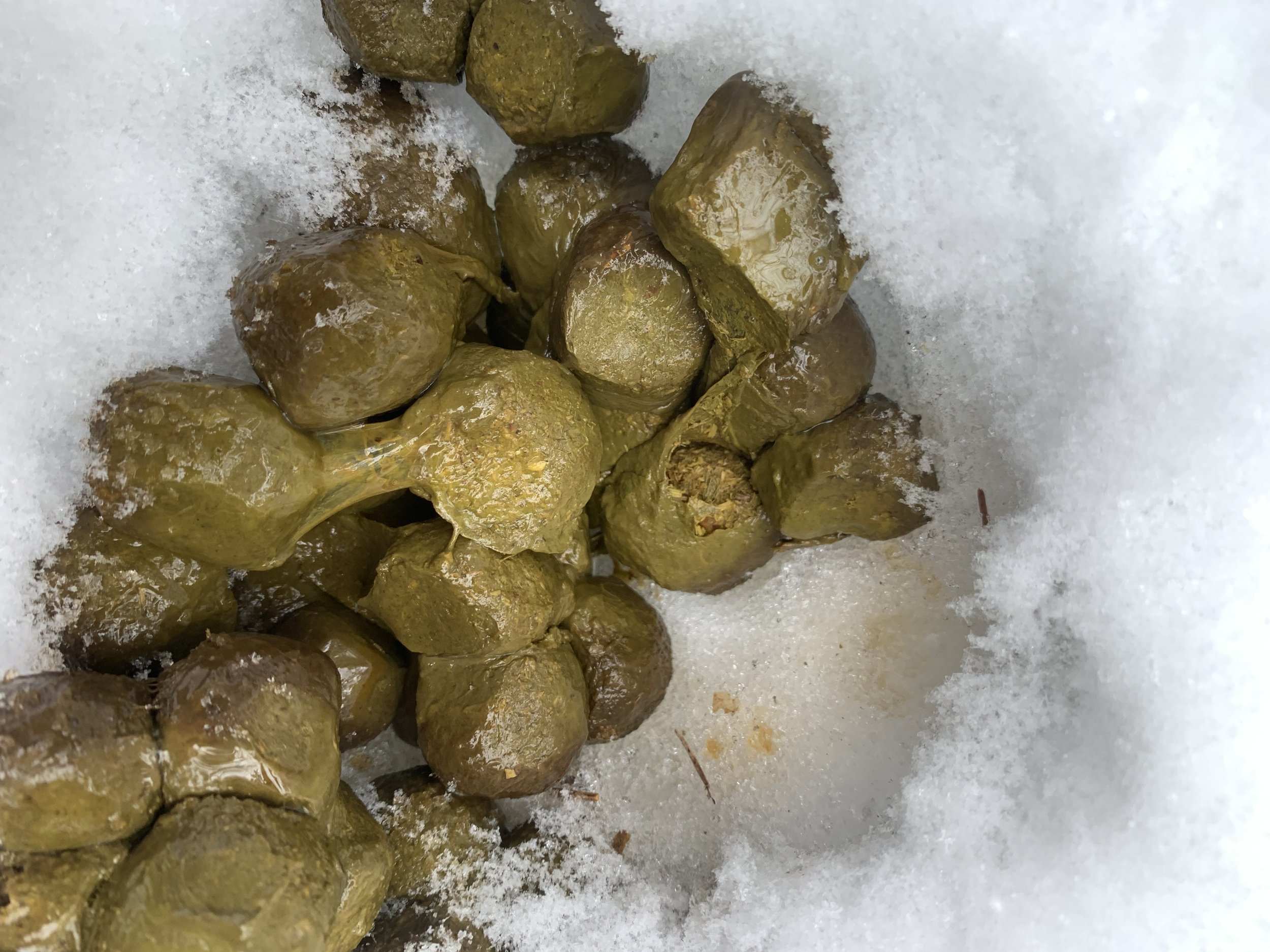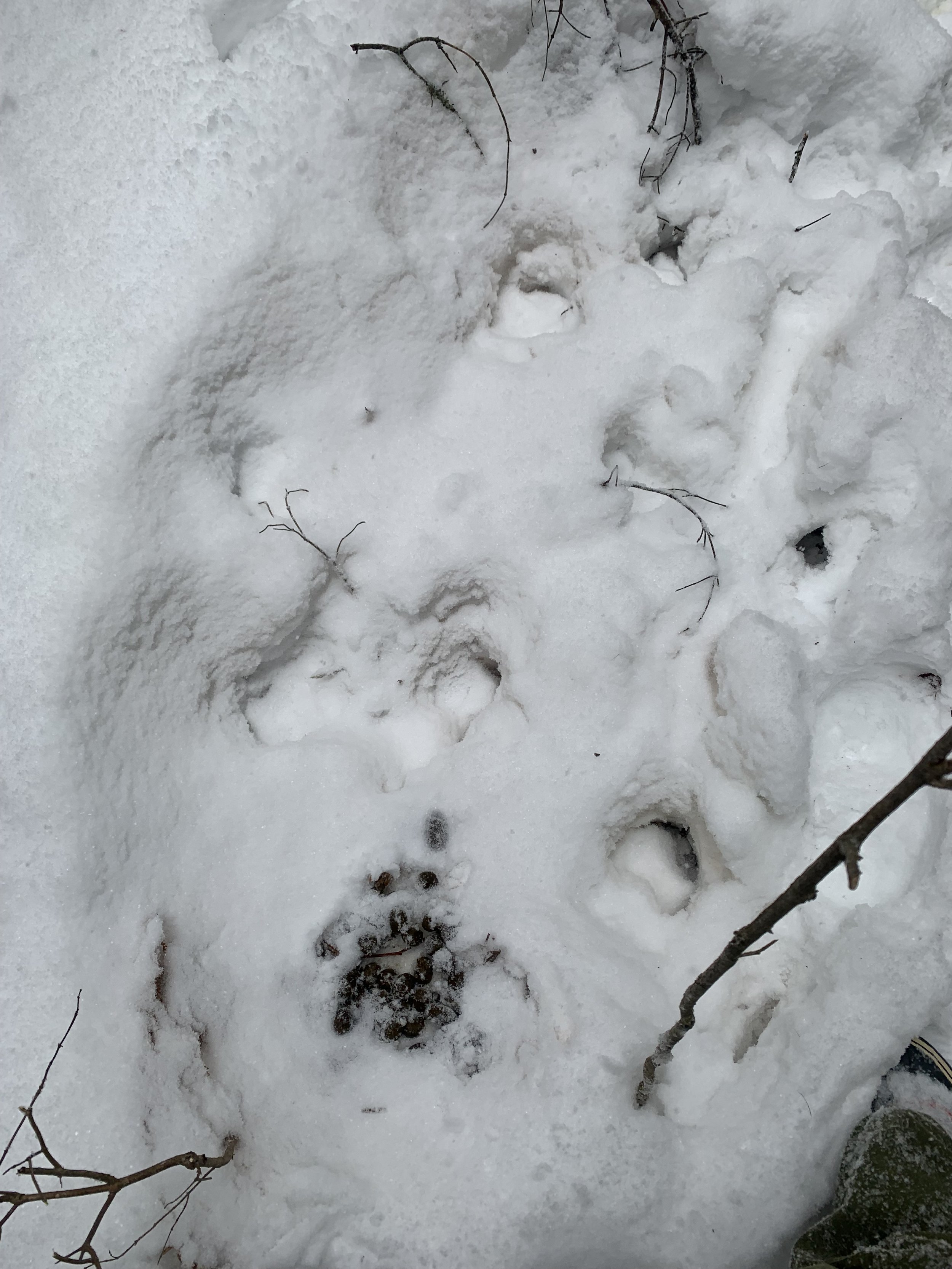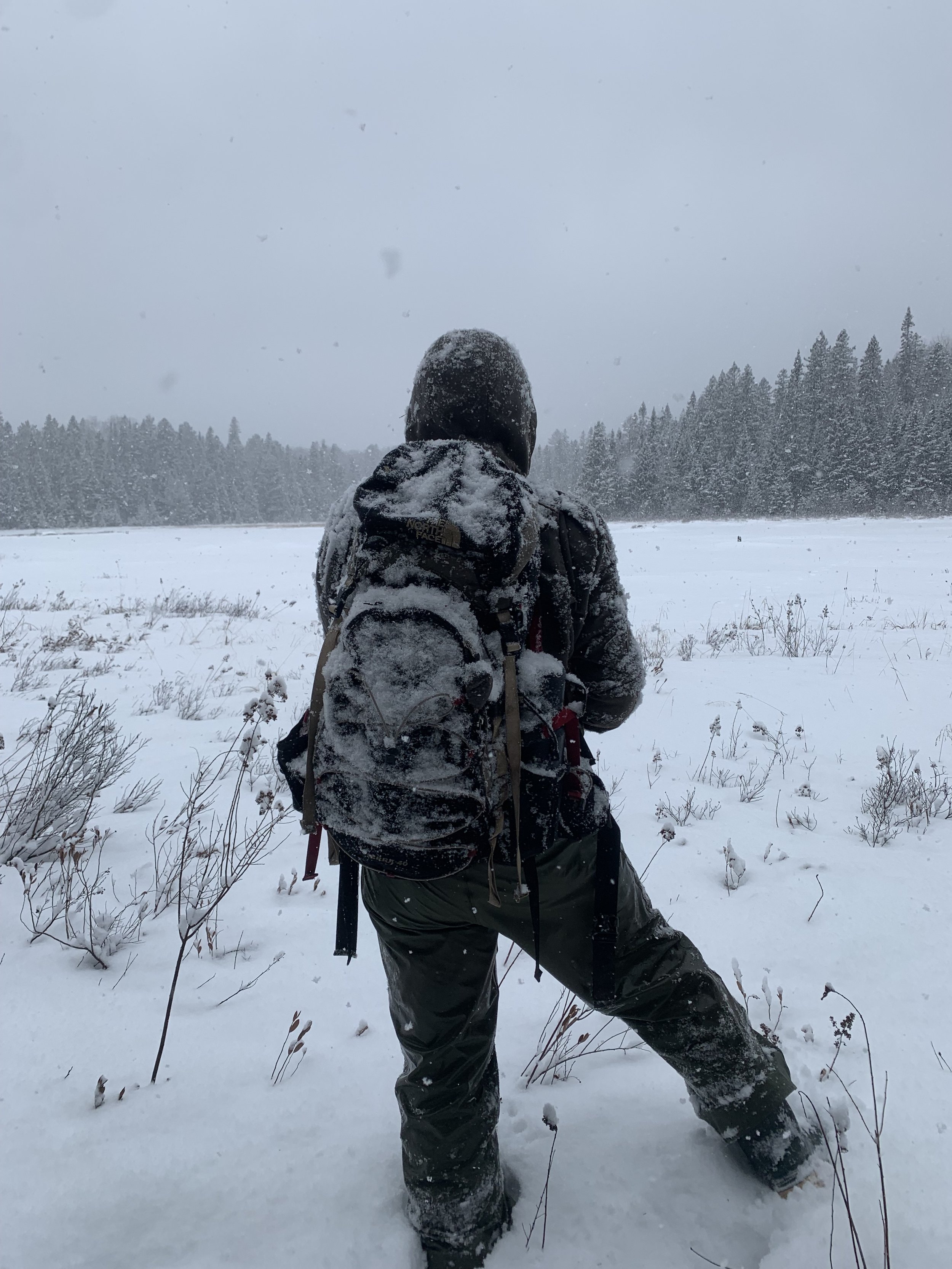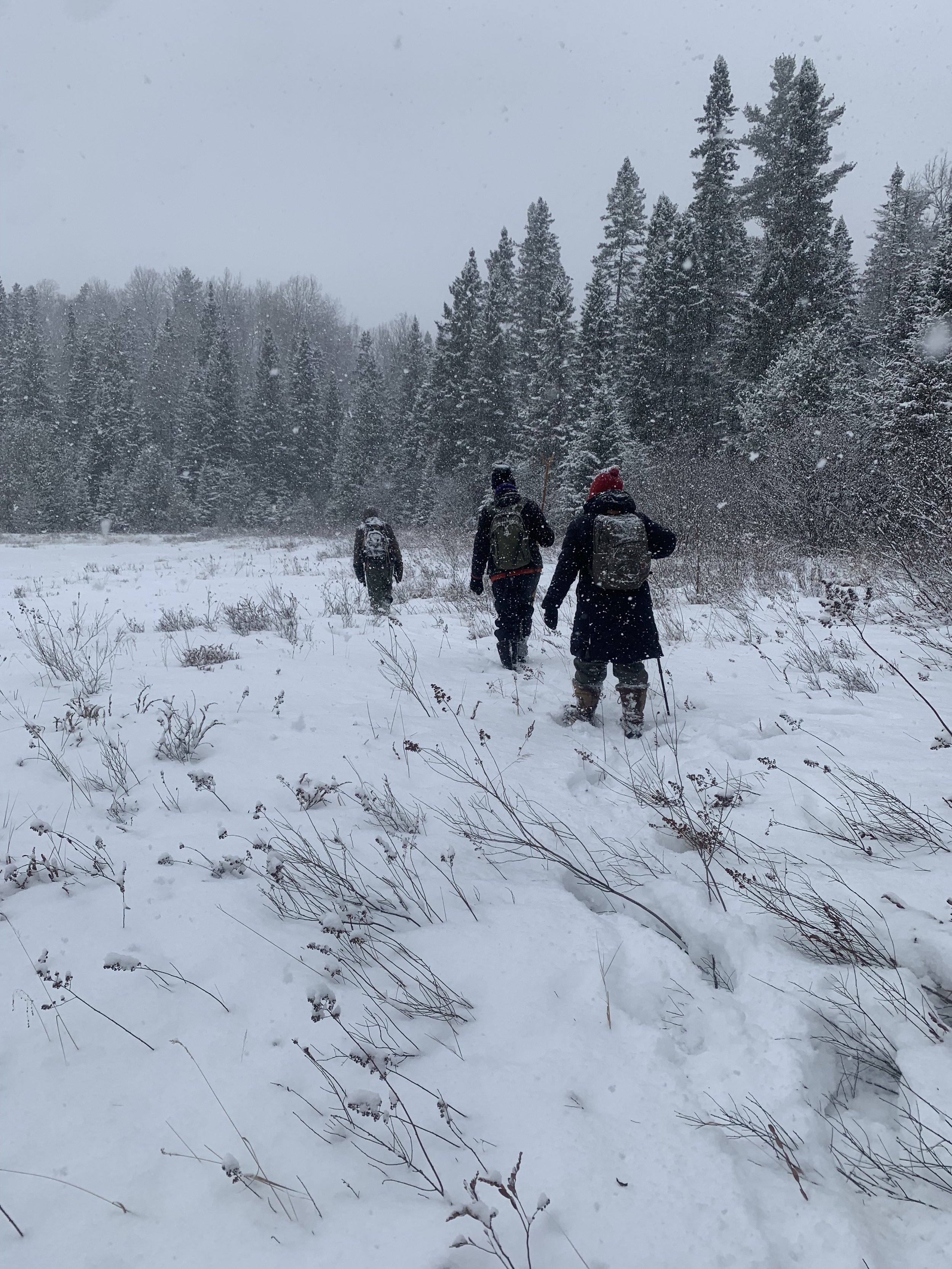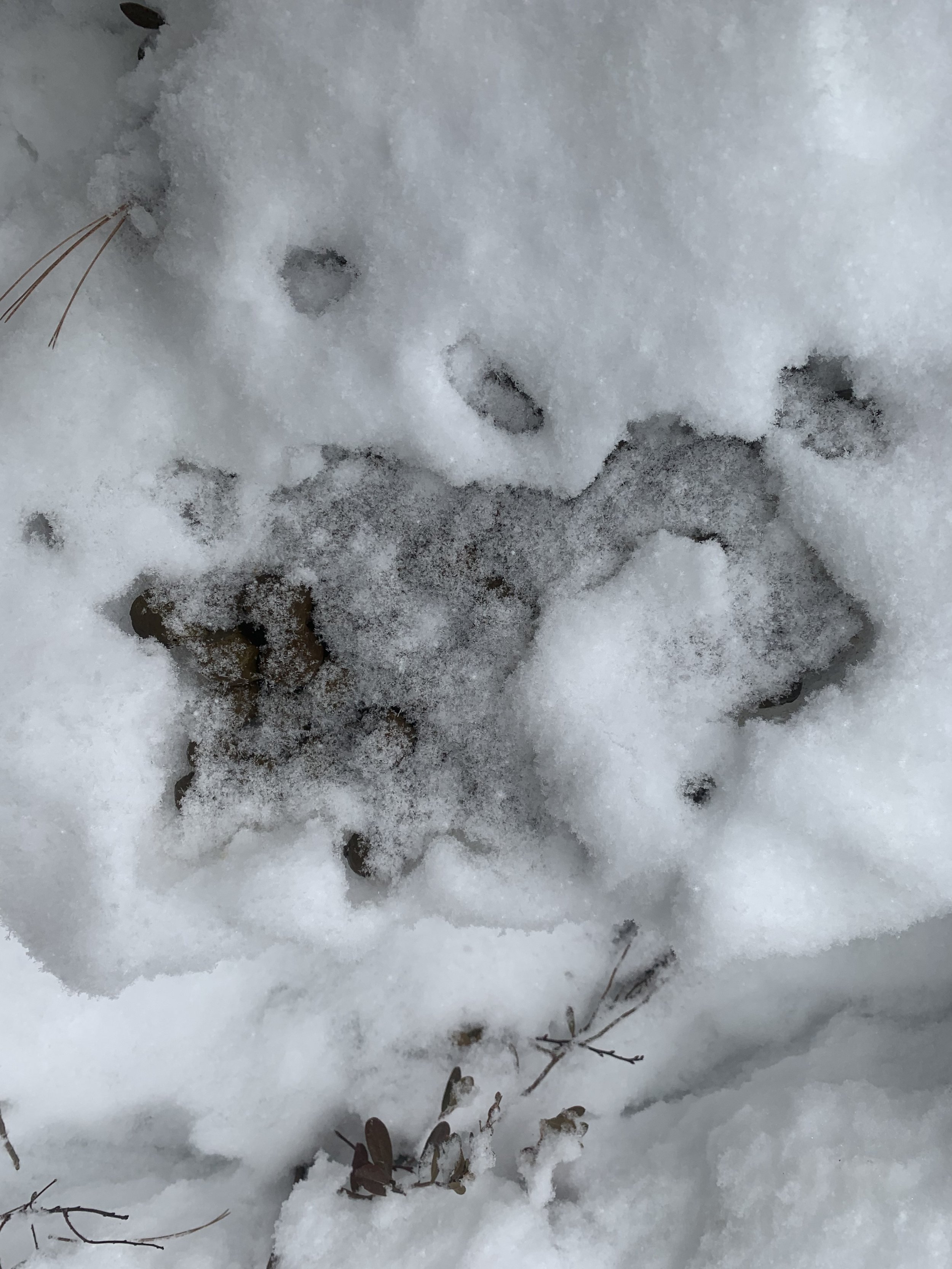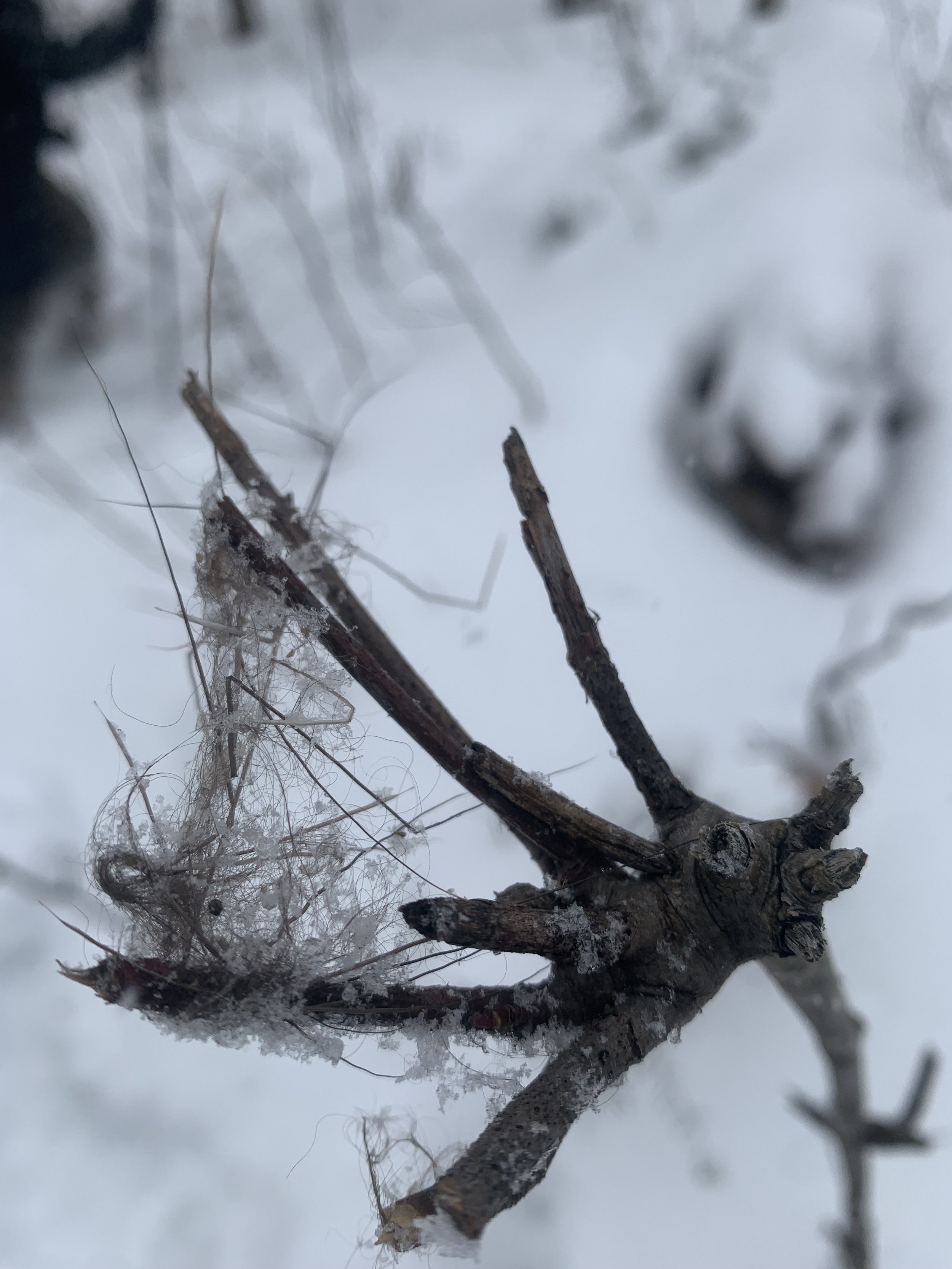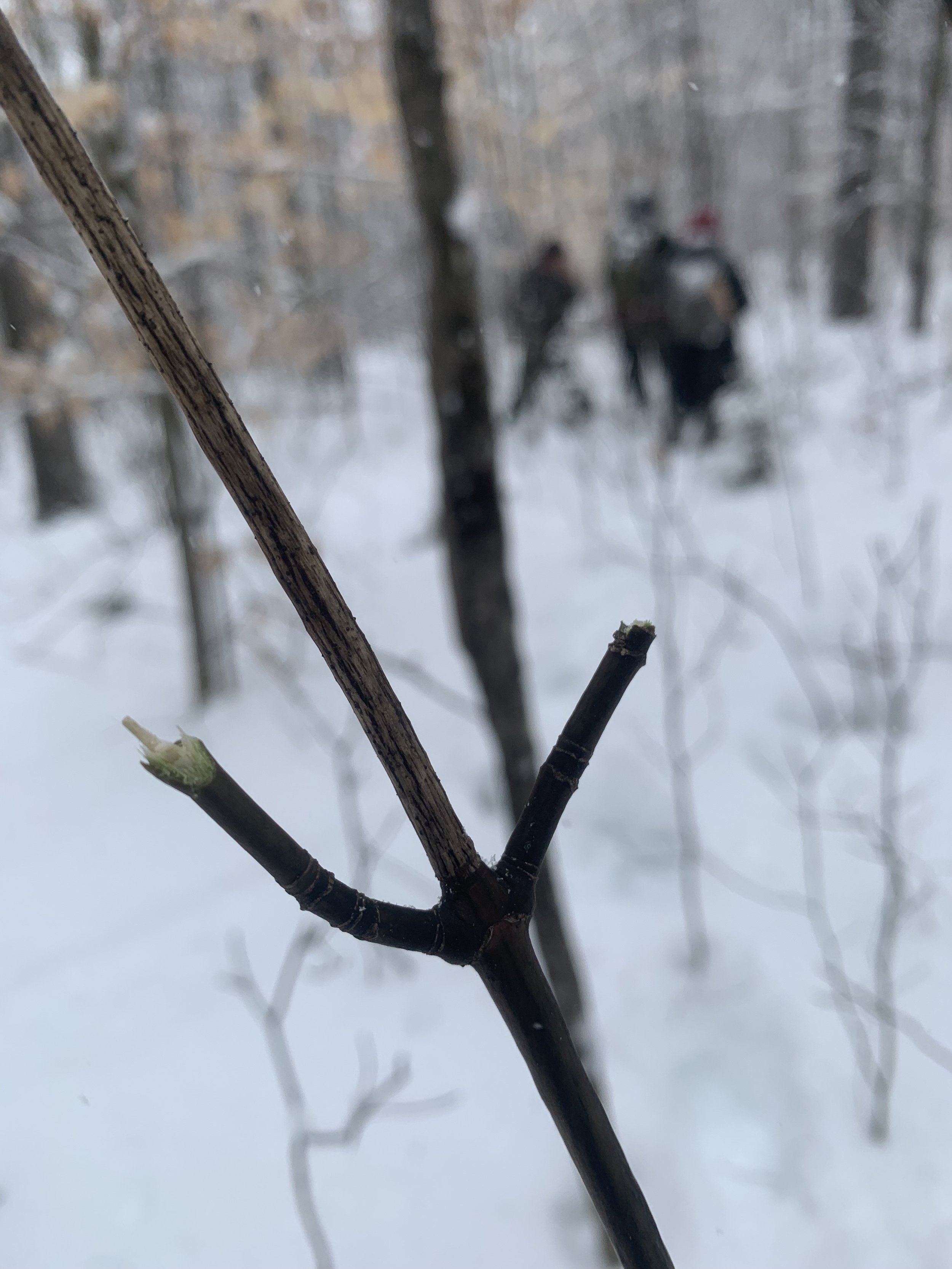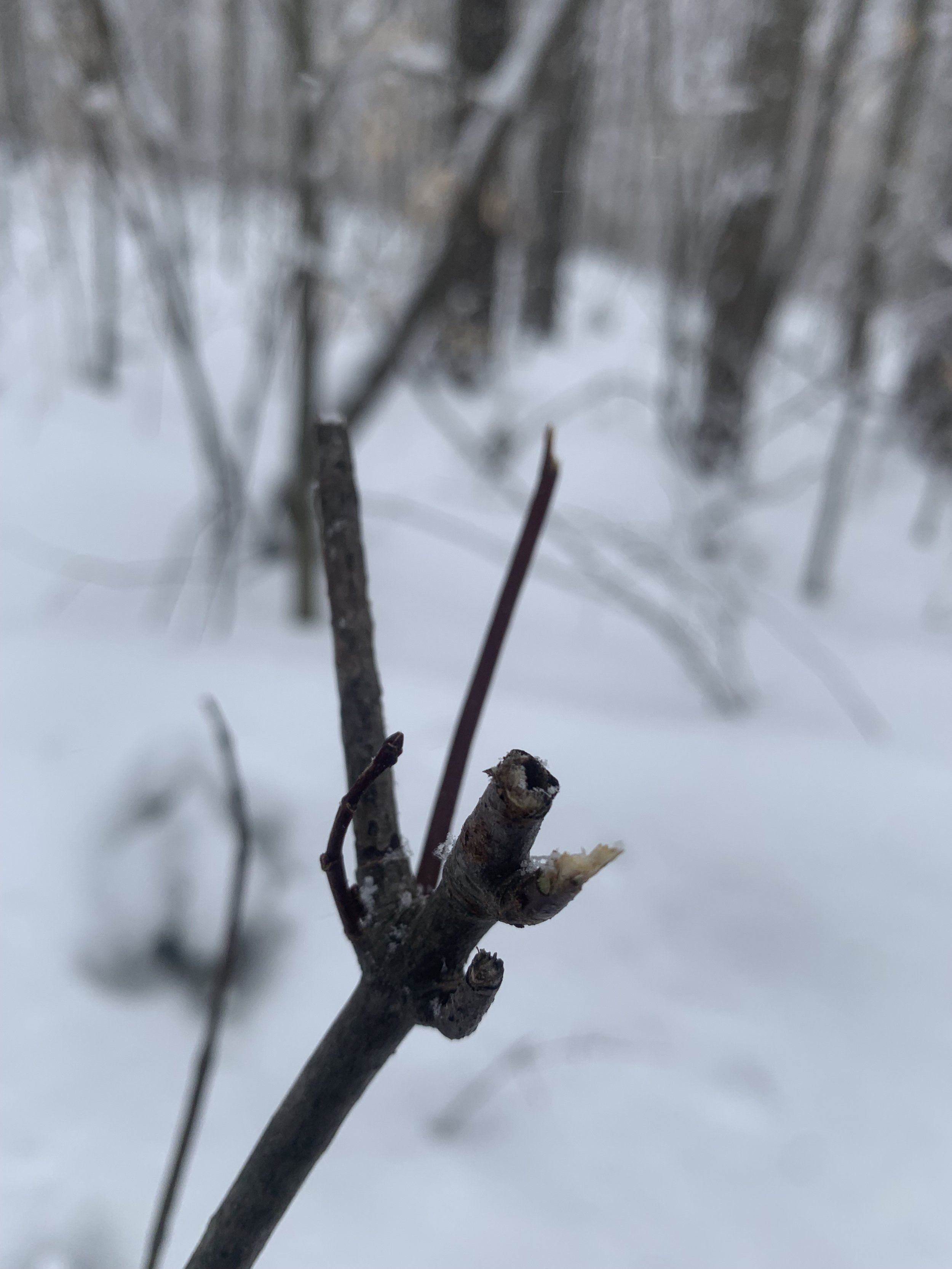Day 2: Algonquin Park
Trailing live sighting of a moose, learning its tracks & sign in falling snow, and seeing if we can’t catch up
Tuesday February 13, 2024:
During the morning scout for tracks, the only thing better than fresh tracks appeared, now for the second day in a row; a live sighting!
We had drove down Opeongo Rd.
While Alexis drove slowly, my eyes focused on the snowy ground out the window. I realized I was seeing movement in the forest, something traveling almost parallel to the road amidst the trees, in the same direction as the truck. Once I identified what it was, I exclaimed aloud “There’s a moose, there’s a moose, there’s a moose right there!”
This would be our day- picking up on this moose trail! … if the falling snow didn’t cover it up…
It would be an hour between driving back to the WRS from the scout, and coming back with more folks from the full crew for the whole day to track the moose.
Panorama of the road as the snow gently, and strongly, came down.
Lessons from the snow
After spotting that moose, I had felt so sure of how amazing and simple it would be to get on its trail and follow it. That it would be a perfect situation.
Little did I know, I would get totally schooled and humbled, by the snow.
Once we arrived with a few more folks back to the moose sighting location, finding the tracks was a total challenge.
The approximate hour of the lovely gentle snow falling, since having spotted the moose, turned out to be a very powerful quantity of gently falling snow.
We did in fact find moose tracks… multiple trails of moose tracks, of varying ages, and multiple directions…
This was a proper tracking challenge!
To differentiate the trail that not only went in the right direction of the moose that had been seen, but was also in a gallop or a run VS a walk, and that was the freshest trail out there, out of several other pre-made moose trails, that would have most likely been made before we had spotted the moose.
Game on!!
Scrapes from a moose would be another track on the trail suggesting we were going the right way.
These above scrapes were on one single moose maple tree. Notice the dark and light green stripes indicative of a moose maple.
The age of these scrapes was likely older than the moose we had seen earlier. None the less, an amazing sign to find! These scrapes were covering a range of the tree of approximately 7 ft high!
Perhaps one day the opportunity to see a moose scraping a tree like this will arise…
Ageing tracks, snow, and the mystery of the moose hair
We had found tracks, found scrapes, and now to determine which trail was the moose we wanted.
The challenge continued.
We spent a few hours following trails. Observing them for direction and stride, if the trail suggested a walk, a gallop, or a run, as well as analyzing the heck out of how old the tracks and snow seemed.
It would be a matter of observing with the eyes first, followed by feeling the snow in the track with the hands, and then the snow around the tracks edges, to feel for if the snow was more hard and frozen, or a bit more crumbly, suggesting that perhaps this was a more recently made track. Times were getting hard.
Suddenly we were graced with something small and wondrous…
Can you spot the single moose hair?
Small and wondrous indeed!
These moose hairs were our next clue.
It is one thing to at least locate moose tracks. It is an entirely other thing, to locate which set of tracks, is the moose you saw a few hours ago, especially with continual descending snow, and multiple moose trails.
These hairs, were how we could truly know which trail was the most recent.
The moose trail with the frequent hair or 2 was followed for a small distance.
I noted that it was very odd that the hairs were visible at all, with all the snow falling.
Why wasn’t the snow building up on top of the hairs ?
Would they not be covered up by the snow?
What the heck is up with that?!
If anyone has ever experienced this wonder of the moose hair, please let me know!
A comment here or an email would be greatly welcome.
Things became a bit blurred in one area, with the continual falling snow, multiple ages of moose tracks, a lot of scrapes on moose maples, and then finally lots of scat.
Clearly we were in an area favoured by the moose.
Moose Scat
The following photos may cause individuals feelings of disgust or gross-ness
Their purpose is merely for observation and learning
Moose scat:
that is not covered with snow.
The same pile of scat from the above photo on the right. On the left, just under a layer of snow, is also moose scat. The lack of snow on the scat is indicative of heat. Heat is indicative of freshness, and freshness, would indicate a recent passing by of a moose. All being ideal signs for finding a moose.
Enough heat was in this mound of scat that it had melted the snow wall beside it. Old and cold scats can’t do that!
Both nasty looking, and informing.
This was a mound of scat that had been altered by using a stick. We can notice a mucus-like substance amidst the scat. Again, some may find this nasty, and it is also informing. The presence of the mucus-like substance is another sign of recent defecation.
If this was older in age, the mucus-like substance may not be present. This is a great sign to look for in fresh moose scat, to determine how recently a scat was left behind. It could also be indicative of the health of the moose or what it had been eating- something I will have to look into further.
Tracks, hairs, scrapes, and scat, now all we need is a bed
Moose bed site.
Sure enough within the same area as the scat, not far from the scrapes, we located a bed!
It was determined that this was a bed for several factors:
Body imprint in snow:
The first, being the large imprint in the snow. With an animal the size of a moose, an impression in the snow from having laid down, was hard to miss for the eye of a tracker.
The length of the impression would be approximately several feet, with the width being roughly 4-5 feet.
Notice the curve in the snow in the bottom left of the photo:
This curve is indicative of the moose’s back side. With its back being along the length of the bed, and its rear end being at the bottom left corner. From this, one could determine that this moose was facing to the right.
Tracks:
The second being clear tracks from the moose in the snow. After bedding down, or laying down, a mammal will of corse in time stand up. Upon standing up, it will have to make contact with the ground and its hooves. I believe it would be safe to say, that you can pretty much, almost always find tracks from a mammal in the spot where it laid down.
Scat:
Thirdly, the presence of scat.
A pile of scat is visible even with a dusting of snow on top. We know that scats can’t leave themselves behind!
These 3 factors are all perfect and prime reasons to determine that this is a moose bed.
A lot of activity had gone down here in the last 24-48 hours. We were doing all the right things, in the right place, but perhaps a tad too late…
The moose trail we wanted, was slowly disappearing back to the land in which it was made by.
Byron looking out over the wetland.
Out of the forest and into a wetland, no moose to be seen. The moose was smart and chose to walk along the shoreline VS strait through. We would do the same and continue on its trail.
Malgosia and Alistar, led by Byron.
More fresh scat and some scrapes along the moose trail kept our hopes up!
Scrape.
Snow covered scat.
2 new signs showed themselves along the trail:
Fur or hair stuck on branches
A single hair.
Fresh feeding sign.
By this time it was just after midday. We ate lunch close to a beech tree with sign from another mammal:
Claw marks from a bear on a beech tree.
We had been consistently on this moose trail, finding lots of fresh evidence that we were not far behind.
By this point, it was like a bad game of tag. Even after an effort to hoof it and move faster with the snow shoes.
We would have to turn back to the vehicles if we were to make it back to the WRS on time.
This was the one that got away!
The last tracks of the moose trail, slowly but surely filling with snow.
Thank you for reading day 2!
Feel welcome to leave a comment, correct any information, or share any facts relevant to this story!
Check out the adventures of Day 3 below:
Mouse, snowshoe hare, grouse, walking over the frozen lake, and tracking a pair of Pine Marten



